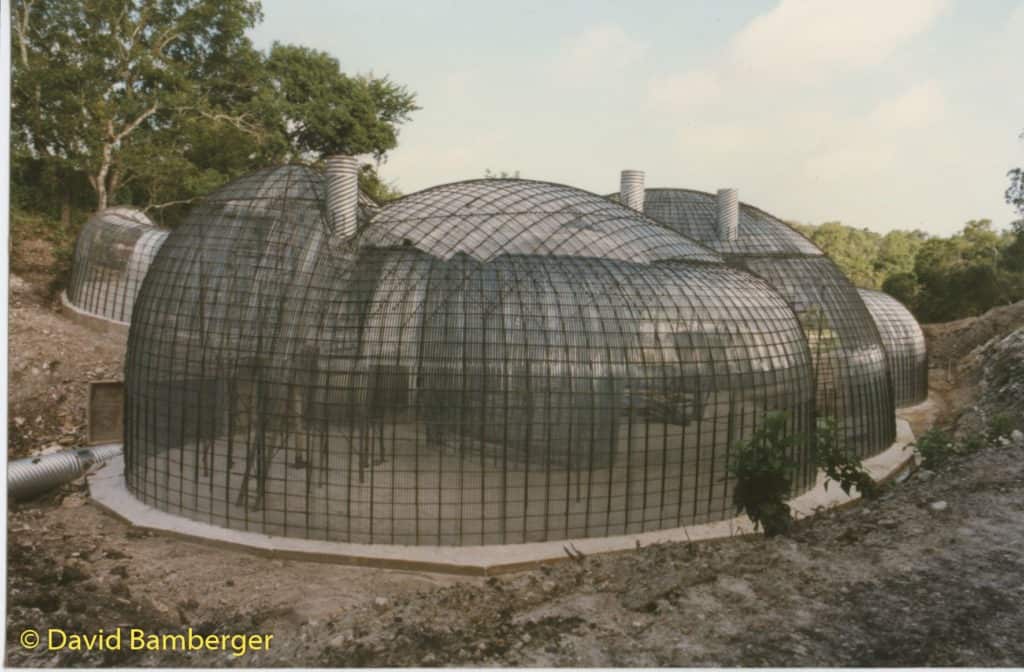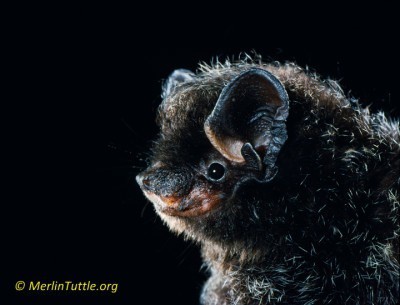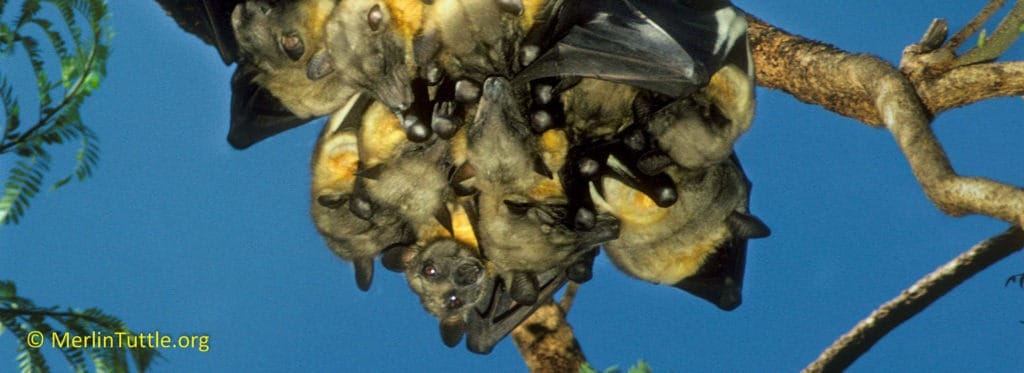Merlin has been asked to comment on the U.S. Fish and Wildlife proposal to prepare a draft of a 50-year environmental impact statement that will affect bats and humans. Proposal Summary The U.S. Fish and Wildlife Service, announces their intent to prepare a draft environmental impact statement (EIS) for proposed issuance of an incidental take permit […]
Merlin’s Keynote Message at the 46th Annual Symposium of the North American Society for Bat Research Merlin provided perspective on bat conservation progress in America over the 46 years since annual meetings of North American bat researchers began in 1970. At that time most Americans had been led to believe that bats were little more than […]

Monitoring Impacts of White-Nose Syndrome (WNS): Decline and Stabilization in a Little Brown Bat Nursery Colony, A Case History from New York A New York nursery colony of little brown myotis (Myotis lucifugus) offers a window of opportunity for monitoring the impact and hoped for recovery of this recently devastated species. The colony occupies seven […]
The Field Guide to Amazonian Bats by Adria López-Baucells, Ricardo Rocha, Paulo Bobrowiec, Enrico Bernard, Jorge Palmeirim and Christoph Meyer is a giant step forward for the world’s most diverse bat assemblage. As one who has spent years identifying and photographing Amazonian bats, I’m exceedingly well impressed with all aspects of this publication, not just its clear and well-illustrated keys, but also with the quality and […]
The arrival of Zika virus in America has triggered widespread alarm and a search for mosquito control remedies. It is carried by mosquitoes belonging to the genus Aedes that appear to be active both night and day. As in the control of other mosquitoes, a variety of options should be considered. Existing chemical pesticides typically cause […]

Modern bats face a serious housing shortage. Millions of homeless bats have died when their caves were destroyed or converted to exclusive human use, not to mention when old-growth forests were logged. Often, the single most important action we can take to restore bats today is to provide alternative homes. We know from long experience […]
This is an outrageously distorted story, obviously planted by those who profit most from public fear. Rabies transmission from bats to humans is extremely rare (just 1.5 Americans per year) and normally involves a bite that is detected at the time. However some people fail to seek medical advice and post-exposure vaccination, and thus are […]
Given the extent and rate of spread of the fungus (Pseudogymnoascus destructans), which causes WNS in North America, it is time to admit that it can’t be stopped. It is here to stay, and further attempts to document or prevent its spread are more likely to exacerbate than alleviate bat mortality. The last thing that the […]

Media headlines are often unnecessarily sensational as they compete for readers/viewers. The National Public Radio headline, “Bats in the bedroom can spread rabies without an obvious bite,” is a good example. However, the story itself, as well as its portrayal of a silver-haired bat, were more balanced than most. Bats can transmit rabies as stated, but […]

If public health concerns were based on actual threats to human mortality, diseases speculated to be spread by bats would take a distant back seat. Even our beloved dogs are many times more dangerous than bats (1). Real killers, like consumption of over processed and contaminated foods dwarf any risks associated with animals (2). Yet […]




